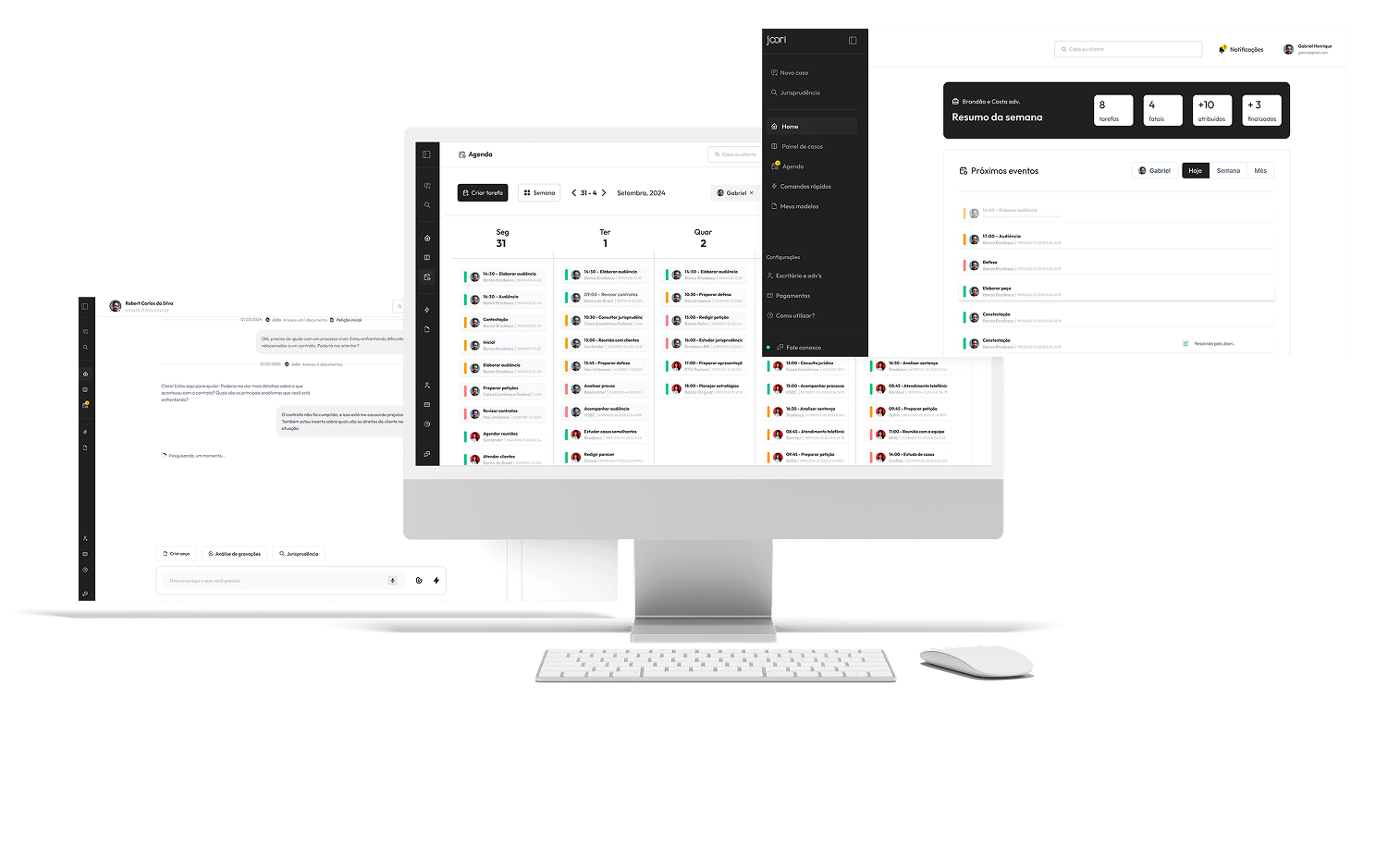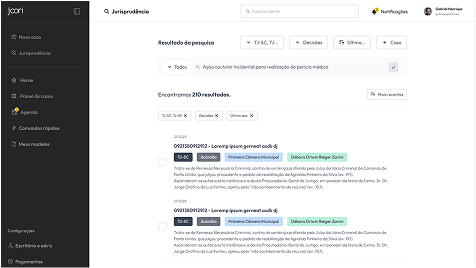JOORI
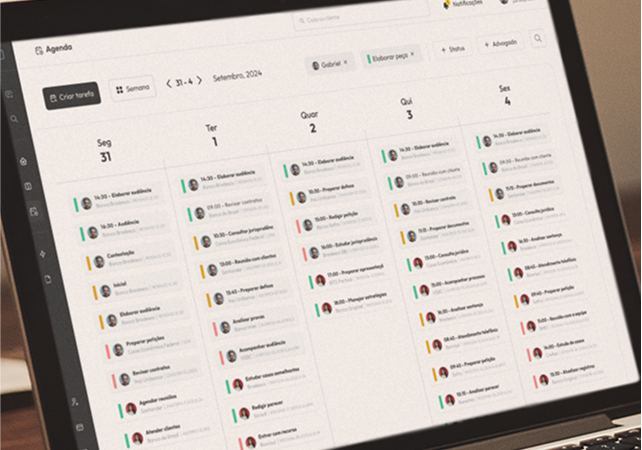
DISCOVERY & RESEARCH
LAW FIRM DEMAND & OPPORTUNITIES
We received a demand from a law firm that faced some specific and manual problems that could be solved with the use of our AI. When exploring these challenges, we found a universe of opportunities.
From there, we started our research process. We worked together with the lawyers from this firm to understand how Brazilian law works and what a lawyer's daily life is like: processes, laws, legal documents, hearings, among others.
We used the user journey tool to map the lawyer's journey and applied a CSD matrix to delve deeper into the information we had learned and observed. With these two tools and countless conversations, we were able to identify various opportunities and clarify doubts directly with the lawyers. This allowed us, through competitor analysis, to understand which problems were already being solved, which were not yet, and which represented true market opportunities.

MARKET GAPS & LAWYER FRUSTRATIONS
At the end of our research and interviews, it became clear that there were many platforms that delivered poorly elaborated legal documents by AI, some focused on process management, others older ones, focused on scheduling and fees, and some exclusively for jurisprudence. However, none integrated all of this, and mainly, none put the lawyer as the central manager of the operation. The manual work was still so extensive that the tools helped little or saved time.
In addition, the main frustration points reported by lawyers regarding their daily lives and products already used were:
- Generic legal documents;
- Many products with different purposes;
- Excessive reading time;
- Mass replication of identical documents;
- AI making up laws;
- Difficulty in verifying cases and processes, since each Brazilian state has its own court, with different websites, interfaces and standards.
IDEATION & DEVELOPMENT
ORGANIZING WITH STRATEGY TOOLS
We then selected four tools to organize the information and one to define the beginning of development or a roadmap. They were: First Goal of Strategy, Subjectivity Test, Ditch the Deck, Strategy Story and, finally, Minimum Viable Strategy.
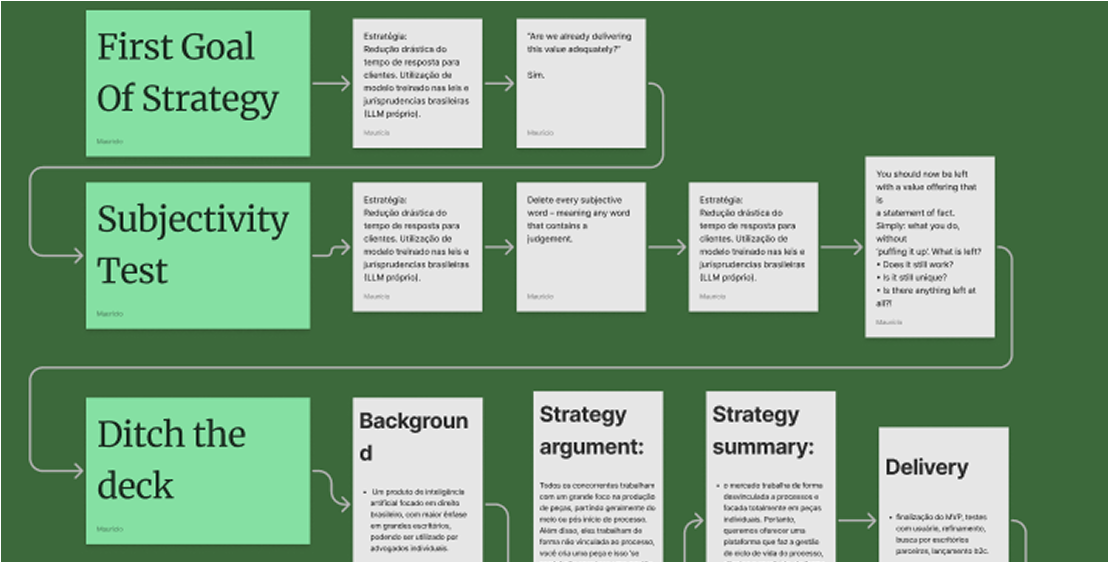
PRODUCT OBJECTIVES & MVP DEVELOPMENT
In a brief summary, the research revealed the following objectives for the product:
- A management tool, not a manual work tool;
- AI must always be contextualized with case documents and information;
- Process updates must occur automatically, as well as schedule creation;
- Dates and deadlines must have maximum priority on the platform;
- Processes and updates must be presented already summarized, with main topics highlighted;
- AI must act proactively whenever possible, allowing the lawyer to act only as a result manager.
Our MVP was designed to receive files and create processes in a contextualized way, making AI work as a lawyer's assistant, taking over manual work.
We designed the wireframes, validated the ideas, developed a high-fidelity prototype using the Flowbite React design system and tested with some lawyers from the firm. After adjustments pointed out in the tests, we started development.
Over time, we evolved the product, always with the goal of allowing the lawyer to focus only on case management, while Joori worked for them.
With the more mature product, we conducted a new usability test to validate the experience on first contact with the platform and its tools. The test brought extremely relevant qualitative and quantitative results for the product's future.
The main improvement point identified was how we presented the onboarding, which ended up generating confusion instead of helping the user. Additionally, some tools did not make clear their association with the created processes.
Since then, we continue seeking data and feedback to keep improving the experience and making the lawyer's life easier and easier.
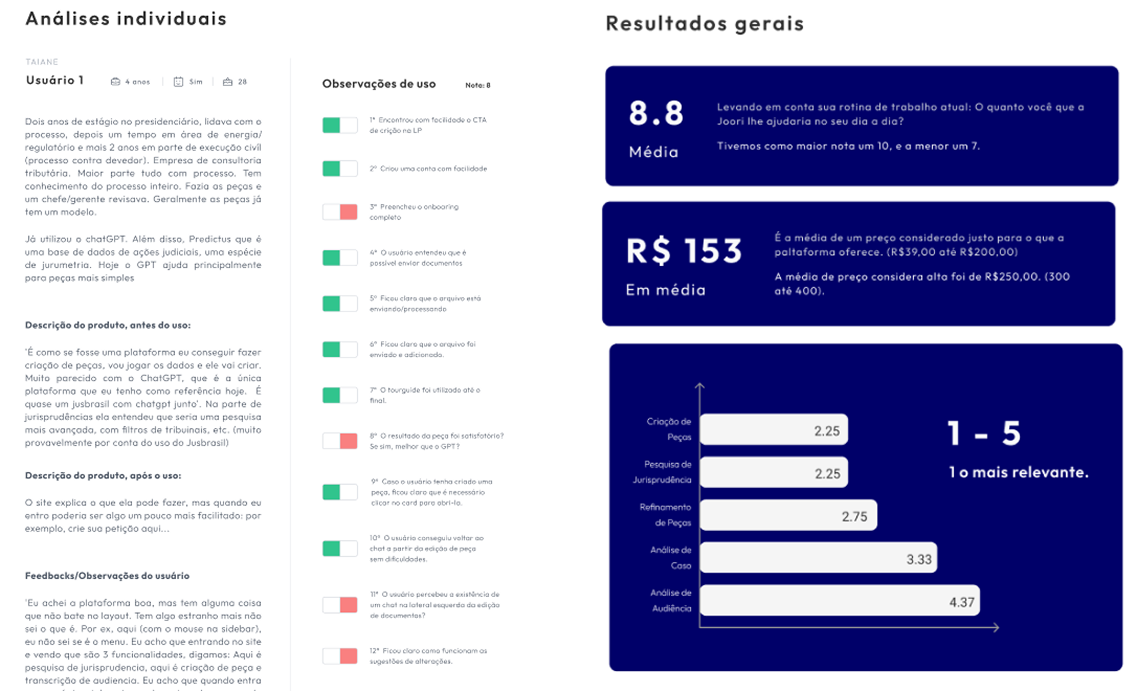

THE PRODUCT
